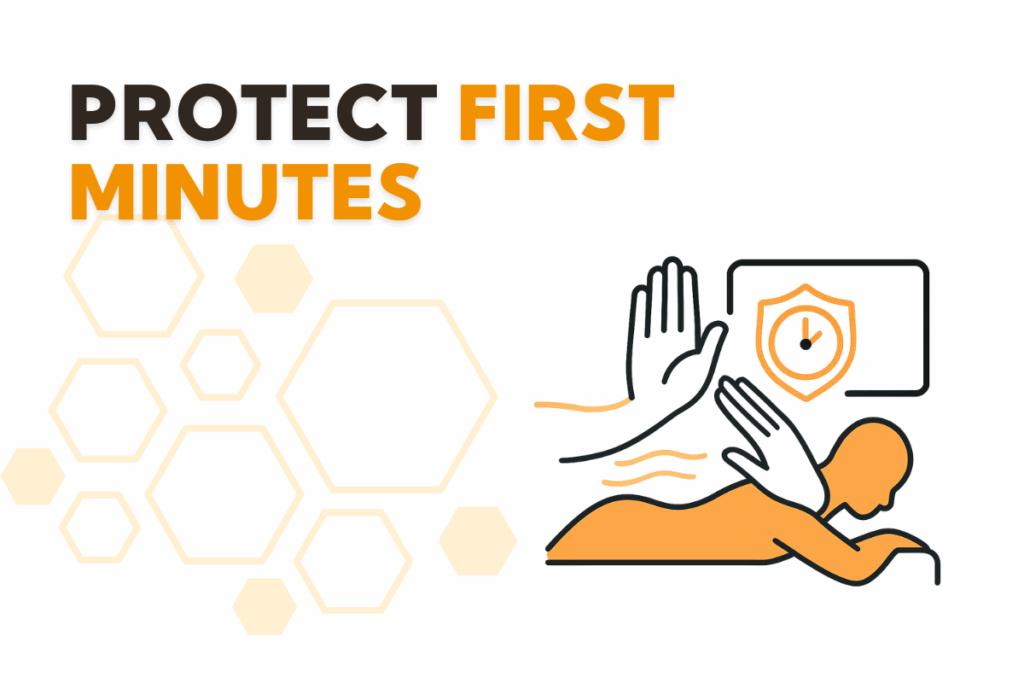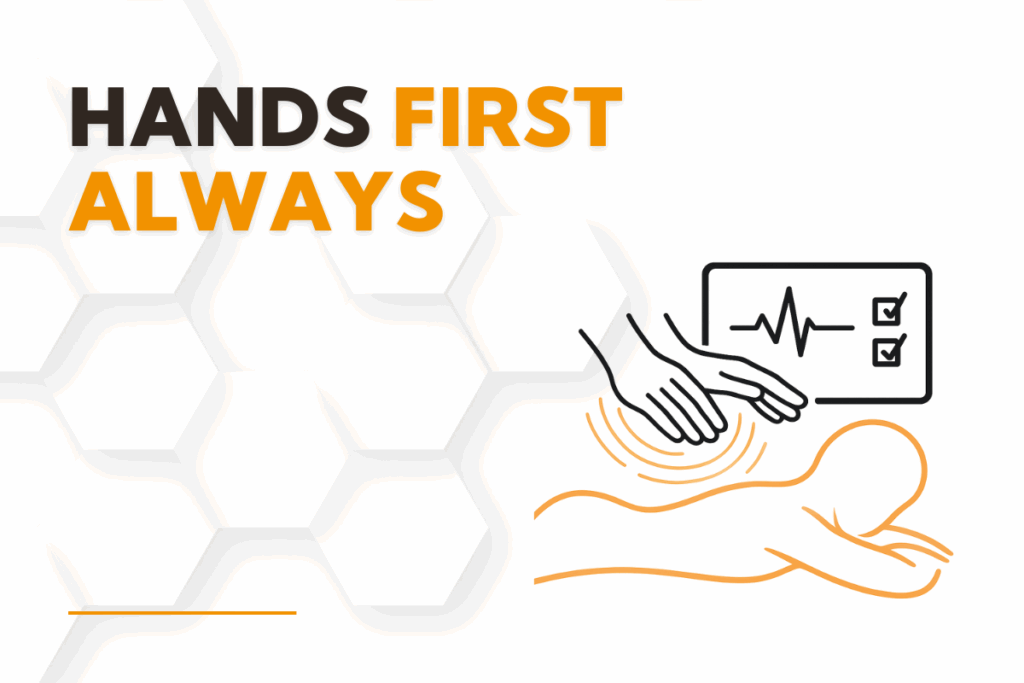Trust your clinical judgment when a clean chart says proceed but your hands say slow down. This guide from The Hivecommunity helps owners and therapists protect safety, consent, and outcomes when live assessment conflicts with the workflow on the screen.
When Your Read Conflicts With the System
The Scenario You Recognize
A new client books deep tissue for ninety minutes. Intake looks clean. In the first seconds you notice guarded breath and a wince on light contact. The schedule wants an on-time start. Your read says pause, clarify goals, and adjust pressure. To keep care safe, trust your clinical judgment and make space to confirm consent before you move.
Why This Happens in Good Clinics
Most tools optimize for averages and speed. Templates flatten nuance and dashboards reward utilization. None of that is wrong, but it is incomplete without a clear, endorsed path for human judgment to override the default. That keeps the chart honest and the session aligned with today’s reality.
The Real Cost of Muted Judgment
Clinical Risk and Near Misses
Ignoring early safety cues turns manageable cases into flare ups. The therapeutic alliance weakens when clients feel worked on instead of cared for. Choosing judgment prevents the small misses that become big problems.
Human Cost Inside Your Team
When people cannot practice safely, they carry moral fatigue. Second guessing grows, confidence drops, and culture thins. Naming your read as the priority gives permission to slow down without fear of blame.
Measurable Business Impact
Rebooking softens, feedback sounds polite rather than enthusiastic, and schedule churn rises. On paper the day looks full. In reality, trust is leaking. Clinics that consistently prioritize judgment see steadier calendars and stronger word of mouth.
Presence Leads, Systems Serve
The Two Minute Safety Scan
Make the first two minutes sacred in every session. Use it to slow the room, align expectations, and confirm consent so the plan fits the body that arrived. The simple act of trusting your read here pays off for the rest of the hour.
Breath and Nervous System Read
Notice pace of breath, facial tension, and protective guarding. These are live signals your templates cannot see, which is why your read matters more than a checkbox.
Pain Language and Today’s Goal
Invite the client to describe pain in their own words and choose one achievable goal for this visit. When aims are clear, it is easier to rely on your read about technique and pressure.
Brief Palpation Response
Use light contact to gauge tissue tone and reactivity before you escalate. If the response is guarded, trust your clinical judgment and revise the plan.
Explicit Consent for the Plan
State the plan in plain language and confirm agreement before moving forward. Consent is a live conversation, not a single signature.

Consent Is Ongoing, Not a Checkbox
Plain Language Consent That Centers Choice
“Based on what I am seeing today, I recommend starting lighter for about twenty minutes, then checking if your body is ready to build. Does that feel right to you.” When you trust your clinical judgment, you help the client choose with clarity.
Trauma Aware Setup In Under A Minute
Clients feel safer when they have options and control.
Positioning and Draping Choices
Offer alternatives that reduce exposure and support comfort so clients can agree with confidence.
Consent For Sensitive Areas
Ask before working near vulnerable regions and name the purpose clearly.
Clear Stop Words And Check Ins
Agree on a word or signal to pause and set a midpoint check in so the session remains collaborative.
Learn A Proven Conversation Framework
For deeper training, review the SHARE model for shared decision making from AHRQ. Visit the Agency for Healthcare Research and Quality page on the SHARE approach at https://www.ahrq.gov/health-literacy/professional-training/shared-decision/index.html
Shared Decision Making Protects Outcomes
Present Options And Trade Offs
Explain risks, benefits, and likely responses for each path in simple language so clients understand the why behind a change. This keeps space to trust your clinical judgment when the body asks for a different path.
Ask What Matters Most Today
Invite the client to name their top priority for this session so the plan serves their real goal and you can adapt with confidence.
Confirm The Shared Plan
Repeat the decision aloud and set a reassessment point so both of you know what comes next.
Turn Judgment Into Policy With A Yellow Light
Green Means Proceed As Booked
Follow the original plan when signals align with intake and goals.
Yellow Means Modify With Intention
Adjust technique, pressure, or time when live assessment suggests risk. Name the change and why it serves the goal. Your team can trust your call because the policy backs the decision.
Red Means Stop And Reschedule
Pause when proceeding is unsafe. Offer a targeted follow up with a clearer plan and explain how this protects their week.
Role Clarity In Sixty Seconds
Everyone acts quickly and without blame.
Therapist Leads The Call
Declare the light, state the reason, and document the plan shift in a short note.
Front Desk Supports The Flow
Adjust time and fee code immediately and communicate in calm, clear language.
Owner Backs The Decision
Publicly endorse safety first calls and remove fear of reprimand for good faith overrides.
Fee Fairness Clients Understand
Publish how modifications affect fees using simple wording. Lead with safety and shared goals so the policy feels fair.
Document Quickly Without Slowing Care
The One Minute Override Note
Capture the pivot while it is fresh using four short lines that summarize what changed and why. The note should state that you trust your clinical judgment and outline the reasoning in plain language. If you need a lightweight place to capture consent and plan changes in real time, connect your process to electronic SOAP notes and keep your language consistent across charts.
Keep Records Tight And Searchable
A clear record protects people and the clinic. Use tags so reviews of therapist led adjustments are easy to run later.

Measure What You Value
Safe Modifications Tally
Count how often therapists make safety first changes and share the stories in your huddles.
Client Understanding Confirmed
Track moments where you verified understanding. It predicts better adherence and calmer follow ups, especially when you trust your clinical judgment and explain the trade offs clearly.
Weekly No Harm Saves
Highlight cases where a yellow light likely prevented a setback. Celebrate them openly. Pair these signals with your utilization data inside clinic reporting analytics so culture follows what you measure.
Train The Muscle With Short, Consistent Practice
Ten Minute Friday Case Round
Share one yellow light story. Describe what you noticed, what you changed, and what you learned. Close by refining a script or cue for the next week.
Situational Awareness Micro Drills
Run quick room scenarios at huddles, ask the team to call green, yellow, or red, and explain the choice in one sentence.
A 30 Day Rollout You Can Copy
Week One Set The Foundation
Announce the two minute safety scan and Green Yellow Red language. Share exact phrases therapists and front desk can use.
Week Two Train Scripts And The Quick Note
Practice the consent script and the one minute override note. Capture one real example from the week and review it together.
Week Three Adjust The Dashboard
Add your new counters and start calling out safety saves during stand up. Visibility builds confidence.
Week Four Run Your First Mini Case Round
Choose one story, document the pattern, and turn that learning into a permanent tweak to your flow.
Bring This To Your Next Huddle
When your read and the system disagree, trust your clinical judgment. Protect the first two minutes. Use the yellow light without apology. Document the why. Measure the save. When you back judgment in public, you build trust in private, and clients feel the difference the moment they walk in.
FAQs
Start with the two minute safety scan, offer a modified plan in plain language, confirm consent, and write a one minute override note. If proceeding is unsafe, call a red light and reschedule with a clearer plan.
You may shorten a few sessions, but you will prevent flare ups, strengthen trust, and improve long term rebooking. Clinics that endorse judgment usually see steadier schedules and calmer teams.
Name what you noticed, connect it to the client’s goal, propose the safer option, and set a check in point. For example, your shoulder is guarding. To protect your week, let’s start lighter for twenty minutes and reassess together.
Publish Green Yellow Red on one page, teach the consent script, and start Friday case rounds. Add a simple chart tag for therapist led adjustments so you can review patterns and coach with clarity.


